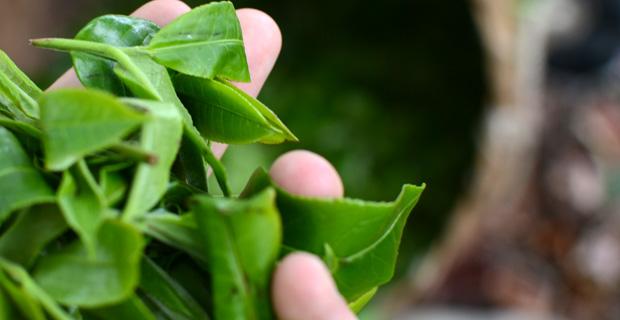What is Puer Tea?
Puer Tea is a classification of tea which can spark intense debate about what does and does not qualify as an authentic Puer tea. This article will focus on forming an easy to understand definition. Puer tea is tea from Yunnan province, made from Yunnan large leaf varietal [da ye zhong], and is a post fermented tea. There are three main sub-categories of Puer tea, ripe tea [shu cha] and raw tea [sheng cha].
Where is Yunnan province?
Yunnan is a province located in the far Southwestern corner of China. It shares borders with Myanmar, Vietnam, and Laos. Yunnan is home to a diverse group of ethnic minorities and a wealth of natural resources. It is also the birthplace of Puer tea. Yunnan has a very rich history and has had shifting borders over the course of the last thousand years, but rather than delve into the finer points of Yunnan's ethnic and geographic history, using a modern Chinese map will define Yunnan quite well. (For more detailed information check the wikipedia entry for Yunnan)
What is Yunnan Large Leaf Varietal?
Large leaf varietal is a variety of camellia sinensis, the majority of tea trees in Yunnan are Camellia sinensis assamica. As the name suggests, the full grown plant has a much larger leaf than most varieties of tea. Large leaf varietal starts as a small bush with a very thin trunk (under 10 cm in circumference) and after 100 years can grow into large trees (80 cm circumference or even larger). These older trees, referred to as old arbor or gushu trees, are the most sought after by Puer drinkers, as they have the deepest root systems and are said to have the richest flavor and quality. Note, the largest leaves in the picture above would not be used as a part of the tea in your Puer cake. Puer tea is usually picked with at most 5 leaves. The smallest of the leaves is the bud, and the largest is called huangpian [large yellow leaf].
What does Post-Fermented Tea Mean?
Post-Fermented tea is a fancy way of saying that fermentation continues to occur after the tea has been processed. An easier way to understand this is that Puer is a "living tea". It continues to change with age. Most Puer drinkers prefer aged Puer tea and purchase Puer teas to age and store for future consumption, rather than drinking very young teas. Some purists even consider younger teas to not be “real” Puer tea, preferring only teas that have been aged.

